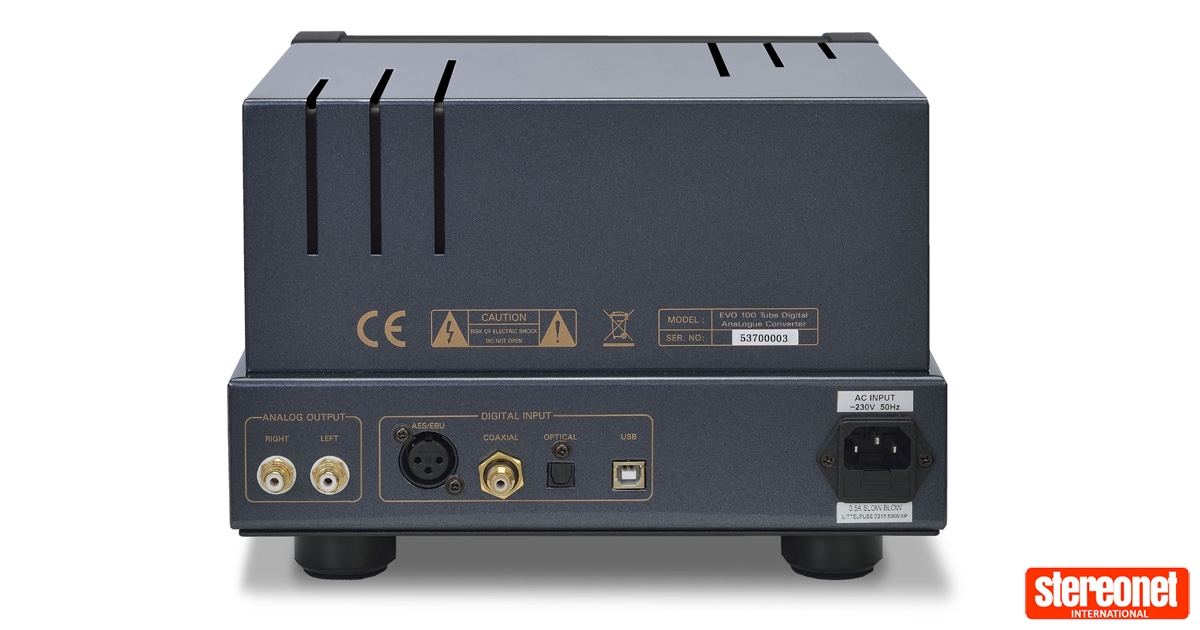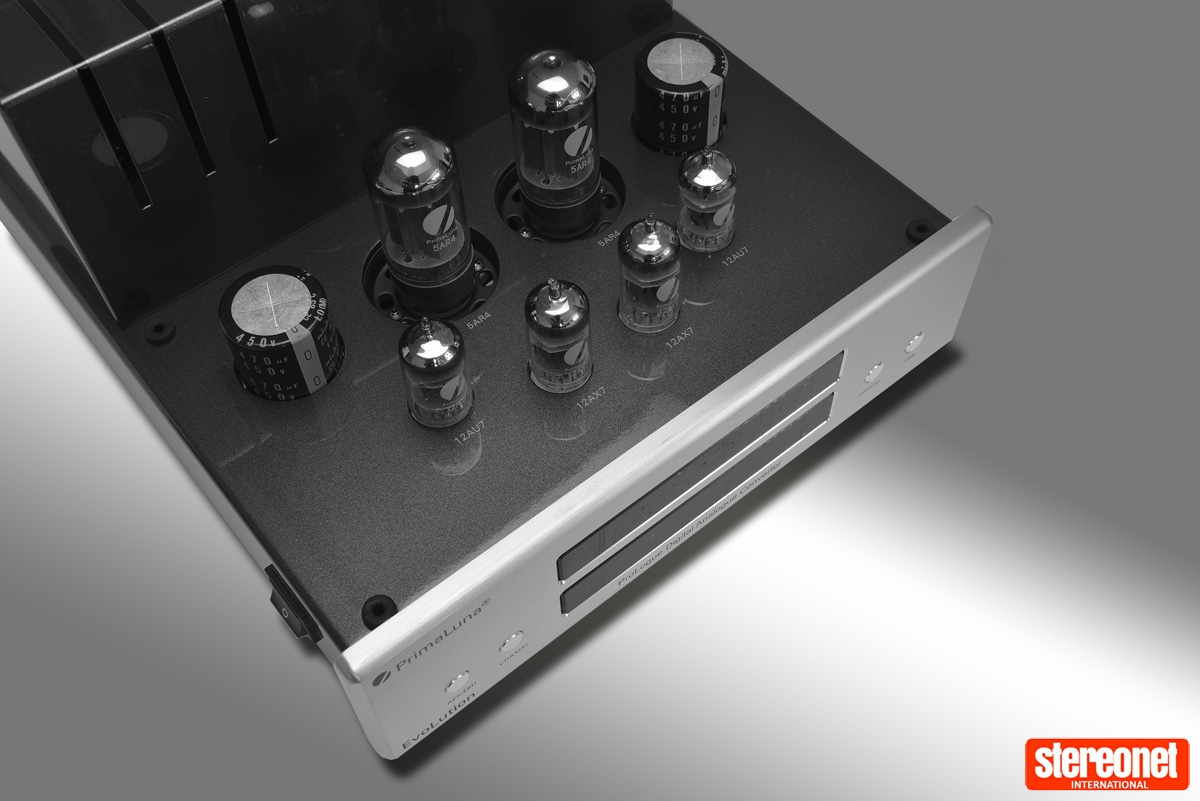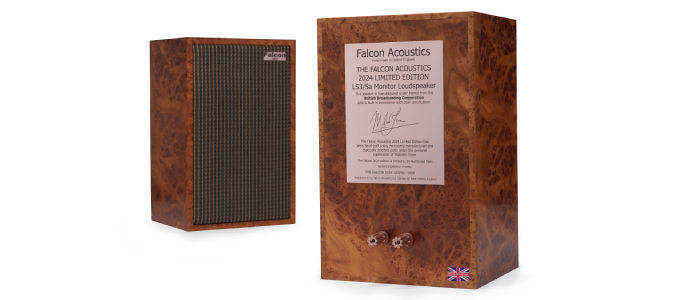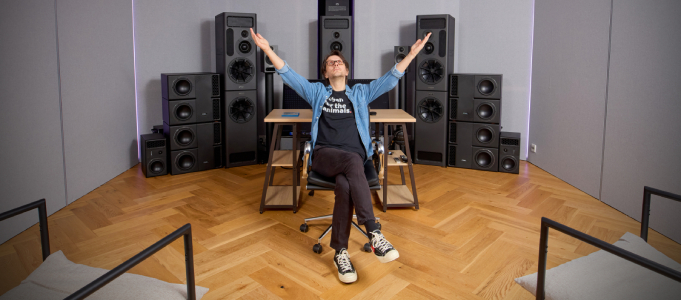PrimaLuna EVO 100 DAC Review

It's a DAC, Jim, and exactly as we used to know it – says James Michael Hughes…
PrimaLuna
EVO 100 DAC
£2,888

You have to admire PrimaLuna. Who else would today dare to offer a simple purist DAC devoid of all the extra frills and fancies seemingly considered 'essential' by today's users? The EVO 100 DAC is as basic as it gets; no streaming, no wireless connection, no headphone socket, no level control.
It is what it says on the tin, then – a DAC, plain and simple, and not a preamp and/or headphone amp. It's aimed at serious audiophiles seeking improved sound from sources such as CD or computer. Its all-tube design features two 12AU7s, two 12AX7s, and a pair of 5AR4 tube rectifiers. Unusually, there's also a tube oscillator – chosen for its wide bandwidth and ability to produce a superior square wave response. The analogue output is transformer-coupled, and the 404x191x279mm unit weighs in at an impressive 13kg – hefty for a DAC.
Although seven tubes are used, the unit runs surprisingly cool. For example, it doesn't get any warmer than Auralic's Altair G2 solid-state streamer/DAC. Cool running is part of the Prima Luna philosophy of not over-stressing the valves to extend their working life. Being tube, there's a delay after switch-on before the item starts working. As soon as you power the DAC up, a timer on the display shows '60s' and starts to count down. After a minute, the unit is ready to rock and roll. While the sound is good from the start, it takes about half an hour to reach its best.

Four digital inputs are offered – USB, S/PDIF RCA coaxial, AES/EBU XLR, and S/PDIF TOSLINK optical. The analogue output is fixed and uses RCA sockets. The front panel display gives a readout of sampling frequency, and both PCM and DSD formats are supported. Sampling frequencies are as follows – S/PDIF inputs: 24-bit/192 kHz PCM and DSD DoP64, USB: 32-bit 384kHz PCM and DSD128 DoP. USB is compatible with Mac (any) and Windows 10 or higher. The choice of DAC chip is interesting, being a Texas Instruments (Burr Brown) PCM1792A with SRC4192 upsampler; it's certainly not the current 'flavour of the month', but in my experience, that's not necessarily a bad thing…
PrimaLuna's so-called 'Super Tube Clock' is built around a Russian military mini-triode specifically designed as an oscillator. The company says this will last between five and ten years, but as always with tubes, it's difficult to say exactly. It's hard-wired in, so replacement would have to be by qualified personnel. With current Russian sanctions, one hopes stocks of this tube will remain obtainable.
The Super Clock design has very low claimed jitter. The PCM signal (via TOSLINK, RCA, AES/EBU or USB) is upsampled via an asynchronous sample rate converter to 24-bit/192kHz. The result is said to be excellent jitter-suppression, plus outstanding phase linearity far beyond the audio bandwidth.
Build quality is outstanding, and the metal casework feels very solid. Point-to-point wiring is featured internally, and the unit is made to an extremely high standard. The unit is supplied with a gorgeous, svelte remote control that lets you select the various inputs, alter the display brightness, and mute the sound. Yet, as with other Prima Luna remotes, a lithium button battery is not supplied, nor is there any indication of exactly which battery is needed!

THE LISTENING
Before doing any actual listening, I had some preconceptions about how the EVO 100 DAC might sound. I was expecting 'warm and rosy, lush and rich', rather than 'lean and immediate'. However, while definitely not brittle or cold sounding, the music produced by this DAC was not especially warm. It's actually very neutral and true-to-life. At the same time, there's a smooth mellifluous 'liquid' sort of quality that's attractive and beguiling. I'd been using an old Tube Technology Fusion 64 valve CD player. This definitely produces a sound with more warmth and glow compared to the PrimaLuna. Yet, curiously, although the Fusion 64 sounded richer, it did not offer the same liquidity.
For all its euphonic warmth, there was a slight glare apparent with the Fusion 64 that largely seemed to vanish when the EVO 100 DAC was used. The difference was especially noticeable on recordings featuring natural acoustic instruments or unamplified voices. Glare and/or hardness has always been an issue with CD. While the EVO 100 DAC doesn't totally eliminate every last drop of digititis, it definitely reduces it by a significant margin compared to most other CD players and/or DACs. However, it's as well to realise that glare or harshness can occur naturally, even with acoustic instruments. For example, violins can produce a lot of odd (rather than even) harmonics that result in the sound seeming a tad forward.

Shostakovich's 8th String Quartet with the Brodsky Quartet on Chandos demonstrated the EVO 100 DAC's refinement. Yet, while the violins had a nice silky sheen when the music was quiet, some louder, more assertive passages began to display a certain abrasive edge. This DAC is essentially truthful, so it doesn't add any warm romantic rosy tints to the sound. Nonetheless, this edge felt like it was coming from harmonics produced by the strings themselves, rather than odd-order harmonics added electronically by the equipment.
So while the sound was often bracingly assertive and immediate, there was also a refined natural quality that sounded pure and true – an attractive liquidity that digital often lacks. The sonic impression was one of gears meshing smoothly and easily without strain.
On Neil Young's Heart of Gold, I was impressed by the clarity and separation of the vocals and instruments – and this on a track that can sound a bit closed-in and lacking in top. I compared the EVO 100 DAC to the Auralic Altair G2's DAC, and the results were interesting. The Auralic wasn't quite as open and three dimensional as the PrimaLuna when it came to clarity and separation, but the bass line was firmer and more solid – seemingly deeper, with greater propulsion. By comparison, the PrimaLuna's bass was a tad soft and more inclined to spread. Nevertheless, it was able to better convey the chugging rhythmic drive of the music. Vocals were better separated from the guitar and bass, and the whole soundstage felt slightly bigger and more holographic.

Playing tracks from Frank Sinatra's album Only the Lonely, the EVO 100 DAC delivered a big, wide soundstage that had impressive depth and atmosphere. There's sometimes a suspicion of slight tape saturation on Frankie's voice, but via the PrimaLuna, this sounded less apparent than usual. Trying Only the Lonely via my Marantz 30n amplifier, and the bass seemed slightly more solid and firm compared to the PrimaLuna DAC, but the latter conveyed more personality and character. The music seemed to flow better as if you were listening to the original master tape.
When making such comparisons, there are always certain sonic differences to be heard. You hear various changes to the tonal balance and suchlike. But beyond all that, the EVO 100 DAC proved very good at drawing you into the music, regardless of its sonic signature. It's a highly musical device that's hugely enjoyable to listen to – the results produced are somehow greater than the sum of the parts. Although the sound can be impressively tactile and sharp, a nice, sweet mellowness is apparent that's natural and real.

Musically, the EVO 100 DAC delivers results that are coherent and cohesive, with very good timing. My wife remarked several times that things were sounding good, and better than usual. I always take note of such wifely comments on sound quality – especially if made without being prompted! I was playing ordinary 'normal' recordings, not audiophile specials that showcase the sonic delights of hi-fi gear. Sure, the EVO 100 DAC is good on flashy 'demonstration' type material, but it's how it reproduces regular recordings that really impresses…
PrimaLuna says the analogue output voltage is 2.1V. Subjectively, this will probably be a tad lower than many other players and DACs. So bear this in mind, and remember to increase the volume a notch or two to compensate when making comparisons. Being transformer-coupled, the EVO 100 DAC has a higher output impedance than other DACs and may be more sensitive to differences between interconnect cable. I can't say I experienced any problems, but it's something to be aware of.

THE VERDICT
 I enjoyed listening to the EVO 100 DAC immensely. I appreciate that it might not appeal to all users due to its connectivity limitations, as PrimaLuna has deliberately kept things pure and simple. Yet sometimes less is more, and it's nice not to have too many extra options you won't ever use or need. Ultimately, all that matters is that an item does everything you want. For me, this is perfectly fine. I'd not really miss any of the 'extras' that it lacks. Essentially, it's a simple old school design where superior sound quality is the main criterion. Anyone wanting performance over features should give this serious consideration, as it's hard to find something that sounds better at or near the price.
I enjoyed listening to the EVO 100 DAC immensely. I appreciate that it might not appeal to all users due to its connectivity limitations, as PrimaLuna has deliberately kept things pure and simple. Yet sometimes less is more, and it's nice not to have too many extra options you won't ever use or need. Ultimately, all that matters is that an item does everything you want. For me, this is perfectly fine. I'd not really miss any of the 'extras' that it lacks. Essentially, it's a simple old school design where superior sound quality is the main criterion. Anyone wanting performance over features should give this serious consideration, as it's hard to find something that sounds better at or near the price.
For more information visit PrimaLuna
- Absolute Sounds
Distributor
James Michael Hughes
An avid audiophile for many decades, Jimmy has been writing about hi-fi since 1980 in a host of British magazines, from What Hi-Fi to Hi-Fi Choice. Based in London, England, he’s one of the UK’s most prolific record and CD collectors – no streaming service can yet match his amazing music collection!
Posted in:Hi-Fi DACs Applause Awards 2022
Tags: primaluna absolute sounds
JOIN IN THE DISCUSSION
Want to share your opinion or get advice from other enthusiasts? Then head into the Message Forums where thousands of other enthusiasts are communicating on a daily basis.
CLICK HERE FOR FREE MEMBERSHIP







